Museums in Athens: A Cultural and Historical Treasure
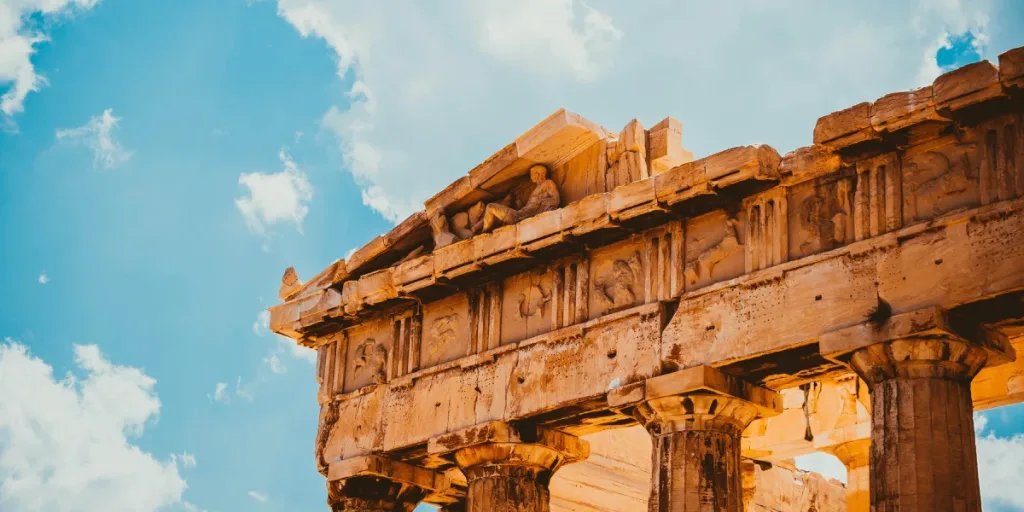
Athens, the cradle of Western civilization, boasts an impressive array of museums that offer profound insights into Greece’s rich heritage. These museums span from ancient Greece to the contemporary era, providing visitors with an opportunity to explore the history, art, and culture of this millennia-old city.
Acropolis Museum
The Acropolis Museum stands as a cultural gem in Athens, preserving and celebrating the legacy of the Acropolis and ancient Greece. Its striking architecture, well-curated exhibits, and educational initiatives make it an indispensable destination for those seeking to immerse themselves in the profound heritage of this historic city. As an institution of both preservation and education, the museum continues to play a vital role in the ongoing dialogue surrounding the return of the Parthenon Marbles to their rightful home.
History and Significance
The Acropolis Museum opened its doors to the public on June 20, 2009, and it quickly became a cultural landmark in Athens. Designed by Swiss architect Bernard Tschumi in collaboration with Greek architect Michael Photiadis, the museum is a modern architectural marvel that complements its ancient surroundings.
Collections and Exhibits
Parthenon Gallery: The Parthenon Gallery on the top floor is the highlight of the museum. It houses the Parthenon frieze, metopes, and pediments, which once adorned the Parthenon temple.
Caryatids Room: One of the most captivating spaces in the museum, it features the Erechtheion Caryatids, the iconic female statues that once supported the porch of the Erechtheion temple.
Archaic Gallery: This gallery showcases sculptures and artifacts from the Archaic period, including statues, votive offerings, and the impressive Moschophoros (Calf-bearer) statue.
Other Galleries: The museum also includes galleries dedicated to other ancient Greek eras, such as the Geometric and Classical periods, featuring pottery, jewelry, and everyday objects.
Underground Archaeological Site
The museum boasts an underground archaeological site, visible through glass floors, which showcases the remains of ancient Athens. Visitors can walk among ancient buildings, streets, and artifacts.
Visitor Experience
The museum offers educational programs, guided tours, and workshops to engage visitors of all ages in the rich history and art of ancient Greece.The top-floor terrace provides panoramic views of the Acropolis and the city, making it an ideal spot for reflection and photography.
Location
The Acropolis Museum is located in the center of Athens, Greece, at the base of the Acropolis hill. Dionysiou Areopagitou 15 117 42 Athens.
The Acropolis Museum is conveniently located in the heart of Athens, making it accessible to both locals and tourists. It is a must-visit destination for anyone interested in the rich history and culture of Greece.
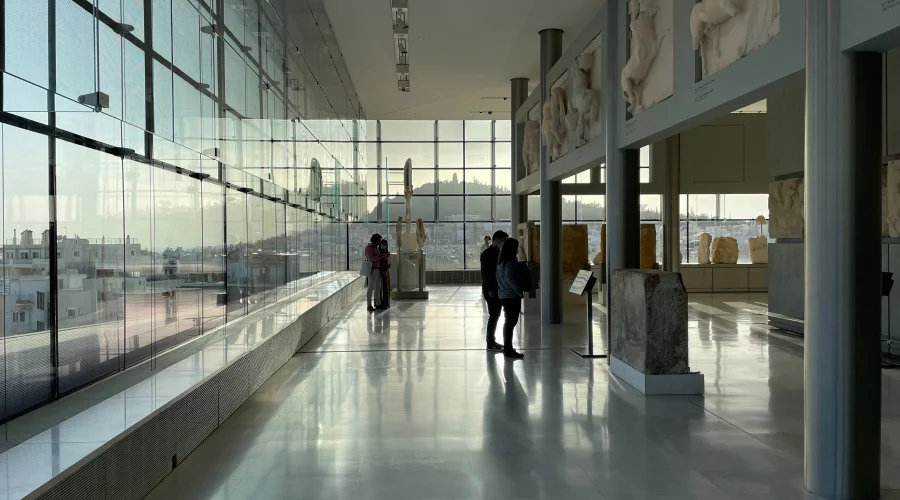
The National Archaeological Museum of Athens
The National Archaeological Museum of Athens stands as a beacon of Greece’s rich cultural heritage. Its extensive collection of archaeological treasures, educational initiatives, and historical significance make it a vital institution for both scholars and tourists. This museum offers a captivating journey through the depths of ancient Greece, providing invaluable insights into the civilization that laid the foundation for Western culture. It is a must-visit destination for anyone seeking to explore the wonders of antiquity.
History and Significance
The museum was founded in 1829, shortly after the establishment of the modern Greek state. It has since played a pivotal role in preserving Greece’s archaeological treasures.
The original building, designed by architect Ludwig Lange, opened in 1889. Over the years, it underwent several renovations and expansions to accommodate its growing collection.
Collections and Exhibitions
Antiquities: The museum houses an extensive collection of artifacts, spanning from the prehistoric to the Roman period. It includes sculptures, pottery, jewelry, tools, and everyday objects from ancient Greece.
Mycenaean Collection: The NAM is renowned for its Mycenaean collection, featuring treasures from the Mycenaean civilization, including the famous “Mask of Agamemnon.”
Classical Sculptures: The museum boasts a vast array of classical sculptures, with highlights including the statue of Zeus/Poseidon and the Artemision Bronze.
Egyptian Antiquities: A notable section of the museum is dedicated to Egyptian antiquities, featuring mummies, sculptures, and jewelry from ancient Egypt.
Santorini Frescoes: The museum houses a remarkable collection of frescoes from the volcanic island of Santorini, which provide insights into the life of the Minoans.
Antikythera Mechanism: One of the most intriguing exhibits is the Antikythera Mechanism, an ancient analog computer that is considered one of the world’s earliest scientific instruments.
Visitor Experience
The museum provides wheelchair access and offers guided tours in multiple languages to enhance the visitor experience. In addition to its permanent collection, the NAM hosts temporary exhibitions that focus on specific aspects of Greek archaeology and history.
Location
The National Archaeological Museum is at 44 Patission Street Athens 106 82, Greece.
Reaching the National Archaeological Museum of Athens is relatively straightforward due to its central location and accessibility via public transportation. Whether you choose to take the metro, bus, taxi, or walk, you’ll find yourself immersed in the fascinating world of ancient Greek history and art as soon as you step through its doors. Enjoy your visit!

National Art Gallery of Athens
The National Gallery of Athens is a testament to the enduring power of art and culture. Its remarkable collection of European and Greek art, along with its educational initiatives and cultural events, makes it a vital cultural institution in Greece. A visit to this museum offers a captivating journey through the world of art, providing invaluable insights into the creative expressions of both local and international artists. It stands as a cultural treasure trove in Athens, inviting all who enter to explore the depths of human imagination and artistic achievement.
History and Significance
The National Gallery of Athens was founded in 1900 by the philanthropist Alexandros Soutzos, making it one of the oldest art museums in Greece. It houses an extensive collection of European and Greek art, spanning several centuries.
Collections and Exhibitions
European Art: The museum boasts an impressive collection of European paintings, including works by renowned artists such as El Greco, Rembrandt, Van Gogh, and Delacroix.
Greek Art: It also features a substantial collection of Greek art, showcasing the evolution of Greek artistic expression from the 19th century to contemporary works.
Special Exhibitions: The National Gallery hosts temporary exhibitions that highlight specific artists, movements, or themes, offering fresh perspectives on its vast collection.
Visitor Experience
The National Gallery is wheelchair accessible and offers services for visitors with disabilities to ensure an inclusive experience.The museum includes a café and a shop where visitors can relax, reflect on their visit, and purchase art-related items.Special events, lectures, and concerts are occasionally held at the museum, enriching the cultural landscape of Athens.
Location
The National Gallery – Alexandros Soutzos Museum 50 Vas. Konstantinou Avenue and Michalakopoulou Street Kolonaki, Athens 115 28, Greece.
Reaching The National Gallery Museum is relatively straightforward due to its central location and accessibility via public transportation. Whether you choose to take the metro, bus, taxi, or walk, you’ll embark on a captivating artistic journey through the museum’s impressive collection of European and Greek art. Enjoy your visit to this cultural gem in Athens!
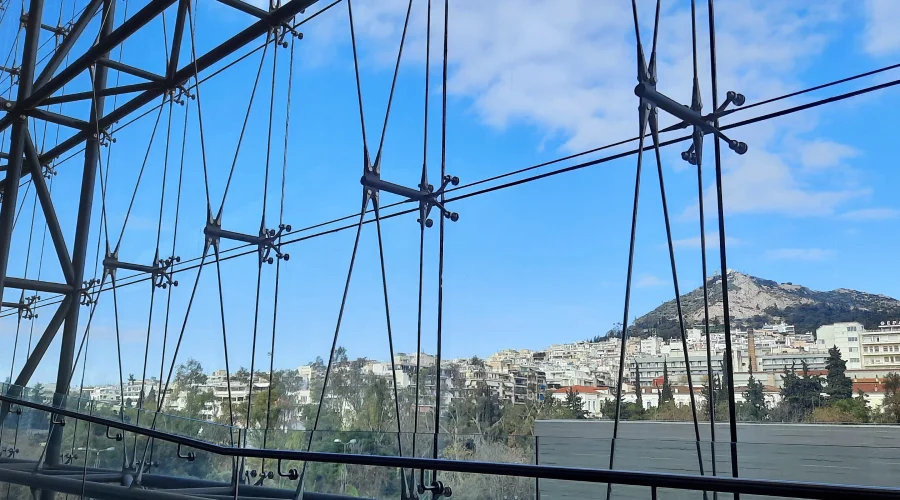
Benaki Museum
The Benaki Museum is a testament to the passion and vision of its founder, Antonis Benakis, who sought to preserve Greece’s cultural heritage for future generations. With its diverse collections, educational initiatives, and branches across Greece, the museum offers a captivating journey through the country’s rich history and artistic expression. Whether you’re interested in ancient artifacts, modern art, or cultural traditions, the Benaki Museum provides a cultural oasis in Athens where you can immerse yourself in Greece’s captivating past and vibrant present.
History and Significance
The museum was established in 1930 by Antonis Benakis, a Greek patriot and collector, with the aim of preserving and showcasing Greece’s rich cultural heritage. It is a private, non-profit institution, making it unique among Greek museums. It was created to house the personal collection of Antonis Benakis, which he generously donated to the Greek state.
Collections and Exhibitions
Greek Art: The museum’s collections cover Greek art and history from antiquity to the modern era. This includes items such as ancient pottery, Byzantine icons, and 19th-century Greek paintings.
Islamic Art: The Benaki Museum of Islamic Art features an extensive collection of Islamic art and artifacts, including textiles, ceramics, manuscripts, and metalwork.
Cultural Objects: The museum also houses a wide range of cultural objects, including traditional costumes, historical documents, and folk art.
Visitor Experience
The main building is wheelchair accessible, and the museum provides services for visitors with disabilities. The museum includes a café and a shop where visitors can relax and purchase art-related items.In addition to its permanent collections, the museum hosts temporary exhibitions that explore various aspects of Greek culture and art.
Location
Benaki Museum – Main Building 1 Koumbari Street and Vassilissis Sofias Avenue 106 74 Athens, Greece.
Reaching the main building of the Benaki Museum in Athens is relatively straightforward due to its central location and accessibility via public transportation. Whether you choose to take the metro, bus, taxi, or walk, you’ll find yourself immersed in the cultural riches of Greece as soon as you arrive. Enjoy your visit to this cultural institution that celebrates Greece’s rich heritage!

War Museum
The War Museum of Athens stands as a tribute to Greece’s military heritage, showcasing its rich history of struggle and resilience. With its extensive collection of military artifacts, educational initiatives, and central location, the museum offers visitors a chance to immerse themselves in the nation’s military past. Whether you have a passion for history, military affairs, or simply wish to gain a deeper understanding of Greece’s journey to independence, this museum provides a compelling narrative of valor and determination. It stands as a testament to the sacrifices made by generations of Greeks to secure their nation’s freedom and sovereignty.
History and Significance
The War Museum of Athens was founded in 1975, although its origins date back to the late 19th century when the first military exhibits were displayed. The museum plays a vital role in preserving Greece’s military legacy and educating the public about the country’s historical struggles for independence and sovereignty.
Collections and Exhibitions
The War Museum boasts a wide-ranging collection of military artifacts, including weaponry, uniforms, flags, and equipment used by the Greek armed forces throughout history.
It features exhibits dedicated to Greece’s War of Independence against the Ottoman Empire and its role in both World War I and World War II. The museum also addresses more recent military history, including Greece’s participation in conflicts such as the Korean War and the Balkan Wars.
Visitor Experience
Accessibility: The museum is wheelchair accessible, ensuring that all visitors can explore its exhibits comfortably. Some exhibits feature interactive displays, enhancing the visitor experience and making it engaging for younger generations. The museum includes an outdoor area with various military vehicles and equipment on display.
Location
The War Museum of Athens is at 2 Rizari Street Kolonaki 106 75 Athens, Greece.
The museum’s central location makes it easily accessible to both local visitors and tourists interested in exploring Greece’s military history.
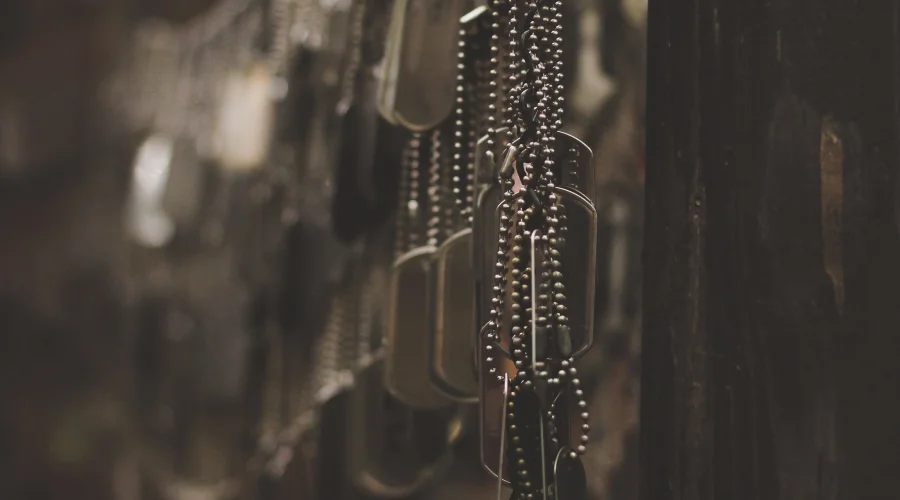
Museum of the History of Athens
The Museum of the City of Athens is a treasure trove of historical knowledge, providing visitors with an opportunity to journey through the ages and explore the captivating history of Athens. With its diverse collections, educational initiatives, and central location, it serves as a vital cultural institution in the heart of the city. Whether you’re a history enthusiast, an architecture buff, or simply curious about the evolution of Athens, this museum invites you to embark on an enlightening exploration of the Greek capital’s rich and vibrant history. It stands as a testament to the enduring legacy of Athens, a city with a past as captivating as its present.
History and Significance
The Museum of the City of Athens was founded in 1973, with the aim of preserving and showcasing Athens’ historical and cultural heritage. The museum itself is housed in the “Vorres Mansion,” a neoclassical building dating back to the late 19th century, adding to its historical charm.
Collections and Exhibitions
The Museum of the City of Athens offers a comprehensive view of Athens’ history through a diverse collection of artifacts, photographs, documents, and artworks.
Neoclassical Athens: The museum’s exhibits include items from the neoclassical period, showcasing the architecture and lifestyle of 19th-century Athens.
Urban Development: Visitors can explore the city’s urban development, historical maps, and plans that illustrate how Athens has evolved over the centuries.
Temporary Exhibitions: In addition to its permanent collections, the museum hosts temporary exhibitions that delve into various aspects of Athens’ history and culture.
Visitor Experience
The museum is wheelchair accessible, ensuring that all visitors can explore its exhibits comfortably.The museum includes a charming café and a garden where visitors can relax and reflect on their historical journey through Athens.The neoclassical Vorres Mansion itself is a work of art, offering a glimpse into the architectural elegance of its era.
Location
The Museum of the City of Athens (Vouros-Eutaxias Foundation) 5-7 Paparrigopoulou Street Kolonaki 106 75 Athens, Greece.
Reaching The Museum of the City of Athens is relatively straightforward due to its central location and accessibility via public transportation. Whether you choose to take the metro, bus, taxi, or walk, you’ll soon find yourself immersed in the rich history and cultural heritage of Athens as you explore the exhibits and collections of this fascinating institution. Enjoy your visit!

Museum of Cycladic Art
The Museum of Cycladic Art is a testament to the enduring allure of ancient art and culture. Its diverse collections, educational initiatives, and central location make it a must-visit destination for anyone interested in the art and history of the ancient world. Whether you are an art enthusiast, a history buff, or simply curious about the Cycladic civilization, this museum provides a captivating journey through time, offering a deeper appreciation for the artistic achievements of our ancestors. It stands as a cultural gem in Athens, inviting all who enter to explore the mysteries of the ancient Cyclades.
History and Significance
The Museum of Cycladic Art was founded in 1986 by the Nicholas and Dolly Goulandris Foundation. It was established to house the extensive private collection of Nicholas and Dolly Goulandris, who were passionate about Cycladic art. The museum’s primary focus is on the Cycladic civilization, which flourished in the Aegean islands from the 3rd millennium BCE to the early 2nd millennium BCE. This civilization is known for its distinctive art and sculptures.
Collections and Exhibitions
Cycladic Art: The museum’s core collection features a stunning array of Cycladic art, including marble figurines, vessels, and sculptures that offer a glimpse into the daily life and beliefs of this ancient civilization.
Ancient Greek Art: In addition to Cycladic art, the museum also houses an impressive collection of ancient Greek art, including pottery, jewelry, and sculptures.
Temporary Exhibitions: The Museum of Cycladic Art hosts temporary exhibitions that explore various aspects of ancient art, culture, and history, often showcasing pieces on loan from other prestigious institutions.
Visitor Experience
The museum is wheelchair accessible, ensuring that all visitors can explore its exhibits comfortably.The museum includes a café and a shop where visitors can relax and purchase art-related items.Special events, lectures, and concerts are occasionally held at the museum, enriching the cultural landscape of Athens.
Location
The Museum of Cycladic Art is at 4 Neophytou Douka Street Athens 106 74, Greece.
Reaching the Museum of Cycladic Art is straightforward due to its central location and accessibility via public transportation. Whether you choose to take the metro, bus, taxi, or walk, you’ll soon find yourself immersed in the captivating world of ancient art and culture as you explore the museum’s exhibits. Enjoy your visit to this cultural treasure in Athens!
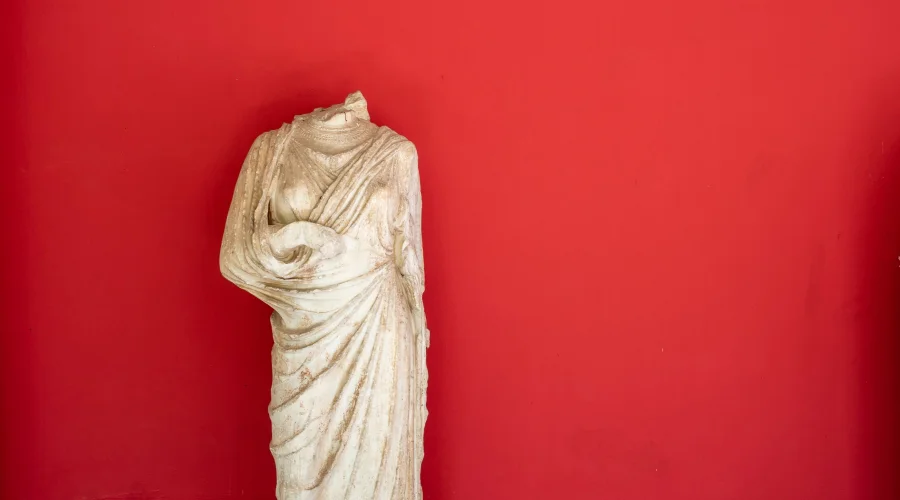
The Goulandris Natural History Museum
The Goulandris Natural History Museum is a sanctuary for nature enthusiasts, educators, and anyone intrigued by the wonders of the natural world. Its diverse collections, educational endeavors, and central location make it a vital institution for those passionate about the environment and biodiversity. Whether you are exploring the botanical gardens, delving into the world of zoology, or marveling at ancient fossils, this museum invites you to embark on an enlightening journey through Earth’s natural history. It stands as a testament to the importance of understanding, appreciating, and conserving the rich tapestry of life on our planet.
History and Significance
The Goulandris Natural History Museum was founded in 1964 by Angelos and Niki Goulandris, visionary philanthropists who aimed to promote the understanding and conservation of the natural world. Beyond public engagement, the museum actively contributes to scientific research, particularly in the fields of botany, zoology, and environmental conservation.
Collections and Exhibitions
Botanical Gardens: The Goulandris Museum is renowned for its extensive botanical gardens, which feature a diverse collection of plant species, both native to Greece and from around the world.
Zoological Exhibits: Visitors can explore zoological exhibits that showcase an array of animal specimens, including taxidermy animals, skeletons, and interactive displays highlighting biodiversity.
Mineral and Fossil Collections: The museum houses impressive collections of minerals and fossils, offering insights into Earth’s geological history.
Paleontological Treasures: Fossils of prehistoric creatures, including dinosaurs and early mammals, provide a glimpse into Earth’s ancient past.
Educational Displays: Interactive learning experiences are available for visitors of all ages, making the museum an engaging destination for families and students.
Visitor Experience
The Goulandris Natural History Museum is wheelchair accessible, ensuring a comfortable visit for all visitors.On-site amenities include a café and a shop where visitors can relax and purchase nature-related items.Special events, nature workshops, and lectures are held periodically, enriching the museum experience.
Location
The Goulandris Natural History Museum is at 13 Levidou Street Kifisia 145 62 Athens, Greece.
The Goulandris Natural History Museum offers a unique opportunity to explore the wonders of the natural world. Whether you’re interested in botanical gardens, zoological exhibits, or geological treasures, your visit promises to be an educational and enriching experience. Enjoy your journey through the beauty of nature!
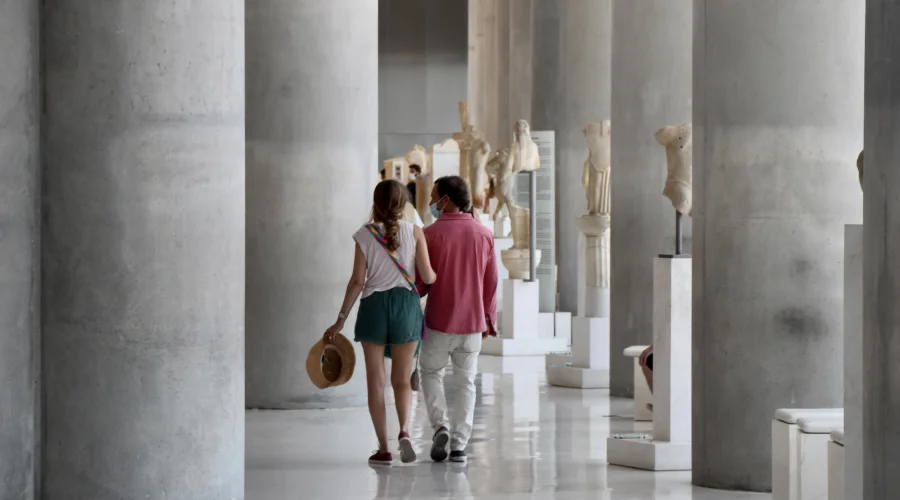
Conclusion
Athens’ museums are not just repositories of artifacts; they are windows into the soul of a city that has shaped the course of history. The Acropolis Museum stands as a symbol of Greece’s enduring connection to its classical past, while the National Archaeological Museum unveils the grand tapestry of civilizations that have left their mark on this ancient land. The Benaki Museum and the Museum of Cycladic Art showcase the depth and breadth of Greek culture, from its folk traditions to its modern artistic expressions. Lastly, the Byzantine and Christian Museum invites us to explore the spiritual and artistic journey of the Byzantine Empire.
In these museums, visitors embark on a transcendent journey through time, where art, history, and culture converge in a remarkable symphony. They are not merely buildings; they are bridges that connect us with the past, illuminating the present and guiding us towards the future. Athens’ museums, collectively, are an embodiment of the city’s rich and diverse heritage, reflecting its ongoing commitment to preserving and sharing the wonders of the past with the world.
Whether you are a history enthusiast, an art lover, or simply a traveler seeking to uncover the soul of a city, Athens’ museums are a testament to the enduring significance of this remarkable metropolis. A visit to these cultural institutions is an enriching experience that leaves an indelible mark, inviting you to become a part of the ever-evolving story of Athens, where history and culture are celebrated with every step you take.









